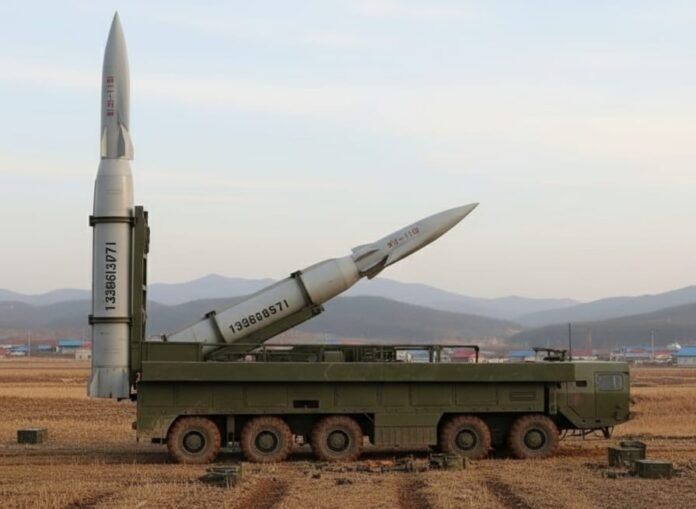Tel Aviv: North Korea has accelerated the development of new advanced missiles. On October 4, 2025, North Korea held a grand military exhibition, in which Kim Jong Un inspected a variety of missiles, UAVs and other weapon systems.
Israel has an eye on North Korea weapon development because of this country’s defence relations with Russia. Moscow actively supports the rebuilding of the Iranian missile capability.
One of the missiles created great interest in the west. Israeli senior defence analyst Tal Inbar, analysed the new, never-before seen missile that was put on display.
Tal Inbar said that the new missile is a Hypersonic Glide Vehicle (HGV), for tactical and operational use. The missile uses a solid fuel booster. The booster is most likely identical to the KN 23 / 24 family of short-range ballistic missiles.
According to Inbar, two missiles are mounted on a compact 5-axle TEL (Transporter-Erector-Launcher)
The Israeli analyst added that the status of the missile is not yet known, but it is expected that test flights will be carried out soon, if these were not conducted before.
Inbar also said that the HGV missiles are no longer large, strategic and nuclear tipped weapon system. ”North Korea is cashing its technology and knowledge to produce small hypersonic systems. It is possible that this new missile will be exported – most likely to Russia, which already uses North Korean short range ballistic missiles,” he added.
North Korea has significantly accelerated the development of its missile programme in 2025, with the pace of advancements and testing notably increasing in recent months. Key developments include the finalisation of a new high-thrust solid-fuel intercontinental ballistic missile (ICBM) engine, the unveiling and parade preparations for next-generation strategic missiles, and apparent collaboration with Russia that may have sped up technological progress.
North Korea completed the ninth and final development test of a new solid-fuel rocket engine for ICBMs in September 2025, a major leap from liquid-fueled designs due to rapid readiness and enhanced survivability.
State media and independent analysts expect a full missile launch test featuring this new solid-fuel technology before the end of 2025.
The country recently showcased a hypersonic missile, the Hwasong-11Ma, with a boost-glide vehicle, indicating efforts to diversify its missile portfolio and introduce more complex threats.
There is strong evidence that North Korea is on the verge of fielding ICBMs capable of reaching the United States with nuclear payloads, though experts note re-entry technology may not yet be fully mature.
North Korea has increased collaboration with Moscow, which experts believe is providing Pyongyang with technical expertise and financial support, contributing to the acceleration of missile programme development.
-The writer is an Israel-based freelance journalist. The views expressed are of the writer and do not necessarily reflect the views of Raksha Anirveda






